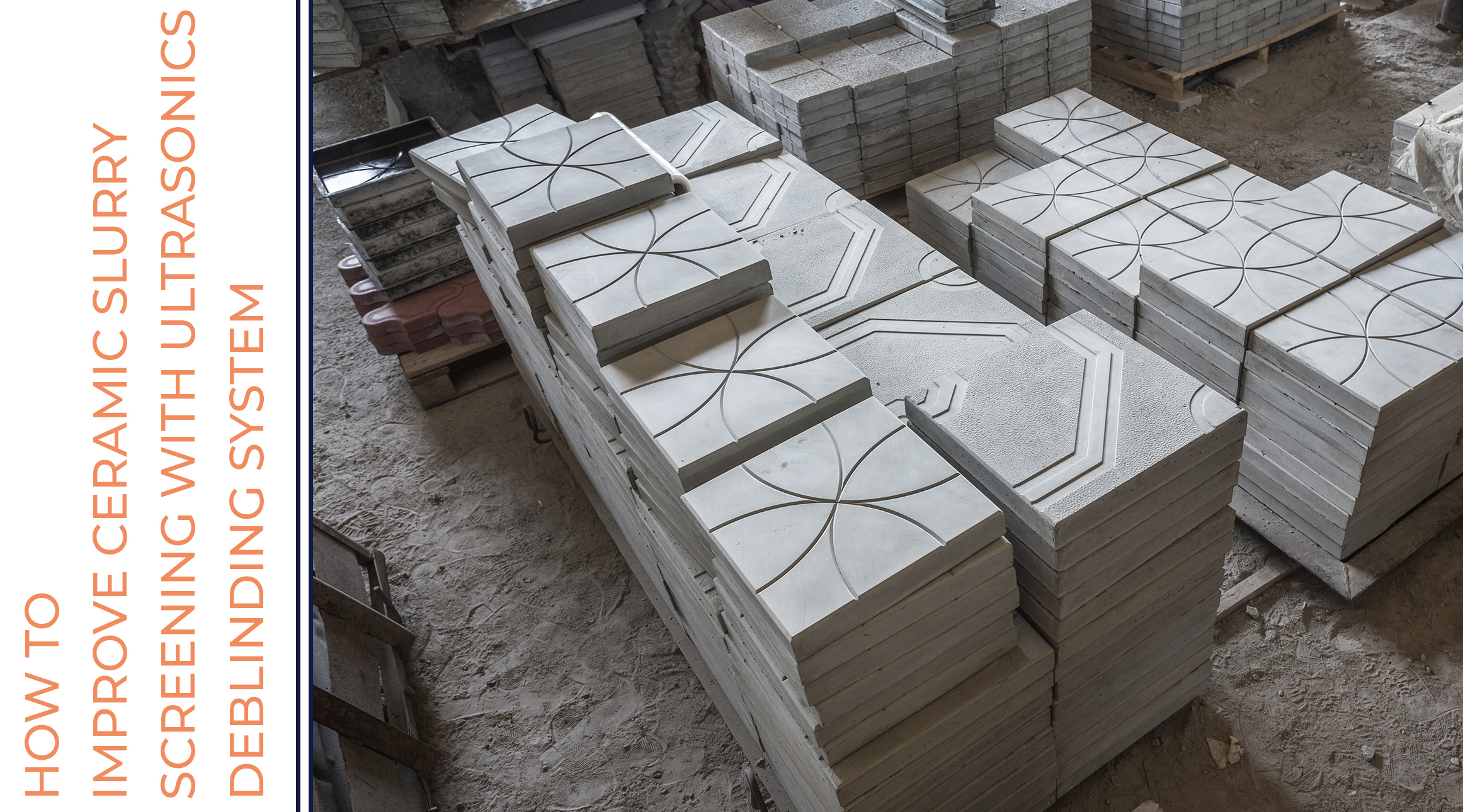Liquid ceramic glaze or clay slurry materials are used in a variety of products and applications ranging from decorative and protective glazes to tile glaze or electrical porcelains. Typically this material starts with either Koalin clays or ceramic powders mixed with water or other liquids to form a slurry. Depending on the application this slurry will need to be screened to remove any agglomerates (powders that did not get dispersed during the mixing process). This is a very important step because, in many applications, this slurry or slip will eventually be applied to an exterior surface either as a decorative or possibly a protective coating. In either case, the coating needs to be free of any oversize agglomerates or debris allowing for an attractive smooth finish free of any pits or blemishes. The finer the screen or sieve used, the better or smoother the finish.
Depending on the application, screening can range from simply pouring the slip or slurry through a filter bag with a relatively coarse mesh to using vibratory screeners with finer mesh sizes – down to 120 mesh or maybe finer. This is where the difficulties begin. The ceramic and clay liquids both contain a high percentage of very fine ceramic or clay particles that will not disperse in the liquid – they are small enough to not affect a smooth finish and actually help to provide a hard protective finish. During the screening process, these particles want to clump together forming a dense layer of clay or ceramic material. This layer of material will basically block or clog the screen openings, therefore needing a solution to relieve such blockages from happening.
When a customer inquired about whether or not our ultrasonic sieving system would work on a liquid ceramic slurry, I explained to him the ultrasonic vibration would most likely be “absorbed” by the slurry and would not be very effective. The customer agreed but still asked if I would try a sample of his material. Reluctantly, I agreed. Once I received the sample, I set up our Model HK-12 equipped with our ultrasonic system and a 145 TBC mesh screen. I initially poured approximately 1 quart of material on the screen surface and turned on the HK-12 with no ultrasonics. The vibratory base of the HK-12 utilizes a 3600 RPM Rotary Electric Drive and generates quite a bit of vibration. After 30 seconds or so the liquid slurry started to dribble out the funnel discharge. Not very productive!
Next, I turned on the ultrasonics and to my surprise, the slurry began to pour out the funnel discharge! I began to pour more of the five-gallon sample the customer sent me onto the screen surface. I experienced no screen clogging or blinding. Later, I worked with more material and my ultrasonics settings and found that the ultrasonics is basically breaking down the surface tension where the slurry is interfacing with the screen surface allowing for the finer slurry to pass through the mesh. The larger ceramic particles still want to stay on top of the screen but the ultrasonics keeps them from adhering to the screen surface.
Now, if you are reading this and have experience with ceramic slurries, glazes or slips in a production environment, you’re asking yourself if this would work in a production application. So far, I have been able to process more slurry in 30 minutes on the Model HK-12 with a 200 mesh fit with ultrasonics than a production screener can do in an hour.
Are you interested in testing your materials on our equipment? Contact us today and let us help you find a solution to keep you moving.

Jeff Hochadel has over 25 years of experience building and selling vibratory screening equipment. Jeff is responsible for handling fine mesh screening applications for The Cleveland Vibrator Company. His expertise is utilizing our Ultrasonic Deblinding System to solve difficult screening problems. When Jeff is not visiting customers promoting our products you can most likely find him fly fishing.
Share this blog post:
Follow us:



2 Responses to How To Improve Ceramic Slurry Screening With Ultrasonics Deblinding System